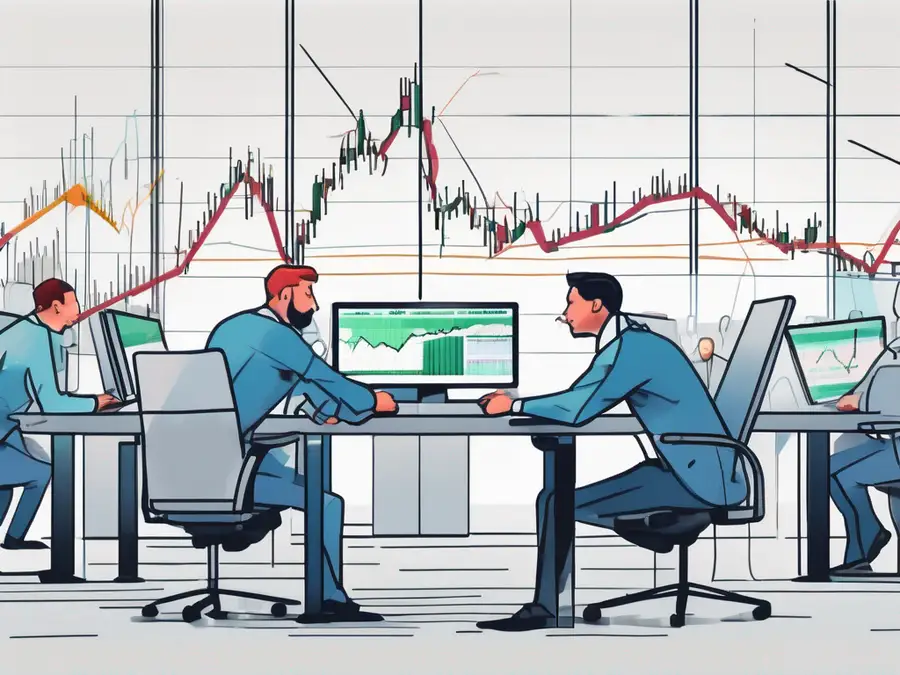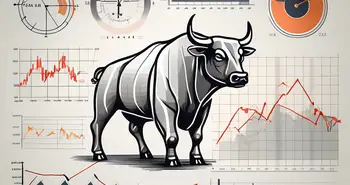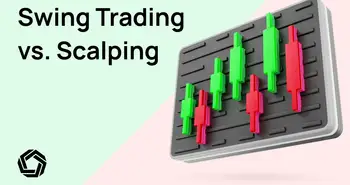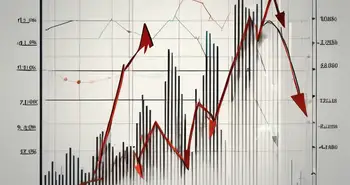Scalping vs Swing Trading: Key Differences and Strategies Explained

When it comes to trading in financial markets, the approaches can vary greatly. Among the most popular styles are scalping and swing trading. Each has its own set of strategies, time frames, and risk profiles, so knowing what sets them apart can help you decide which suits your trading style better. In this article, we will explore the fundamentals of each, their key differences, and the strategies that can lead to success.
Understanding the Basics of Trading
Before delving into scalping and swing trading, it's essential to understand what trading is all about. At its core, trading involves buying and selling financial instruments with the goal of making a profit. This can involve equities, forex, commodities, or cryptocurrencies.
Traders use various strategies to decide when to enter and exit trades, often based on market analysis and personal risk tolerance. By understanding the fundamental differences between scalping and swing trading, traders can better align their strategies with their personal goals and market conditions.
What is Scalping?
Scalping is a quick-paced trading strategy that aims to profit from small price changes throughout the day. Scalpers execute numerous trades within short periods, often making dozens or even hundreds of trades in a single session. The key focus is on liquidity and speed; scalpers generally capitalize on minute price movements that may only last for a few seconds or minutes.
To visualize scalping, think of it as trying to catch small fish in a pond, using quick reflexes and strategies to secure little wins. A scalper might buy a stock, wait a few seconds for the price to rise just slightly, and then sell it for a profit, all before the next wave of buyers or sellers changes the price again.
Successful scalping requires a deep understanding of market mechanics and a keen eye for timing. Traders often utilize advanced charting tools and algorithms to identify the best moments to enter and exit trades. Additionally, they must be prepared for high transaction costs, as frequent trading can lead to significant fees. This strategy is not for the faint-hearted; it demands intense concentration and the ability to make quick decisions under pressure.
What is Swing Trading?
In contrast, swing trading is a style that focuses on capturing gains over a few days to weeks. Swing traders aim to benefit from the natural “swings” in the market, identifying potential price reversals and trends. While scalpers may target smaller, rapid price changes, swing traders typically look for larger price movements over a more extended period.
Consider swing trading similar to surfing; you're waiting for the right wave to ride. A swing trader will perform thorough analysis and watch market conditions before making a move, holding onto positions longer to maximize profit from larger price shifts.
Moreover, swing trading often involves a combination of technical analysis and fundamental analysis. Traders might look at price charts to identify patterns and trends while also considering news events that could impact market sentiment. This dual approach allows swing traders to make informed decisions based on both price action and external factors, which can lead to more substantial profits compared to the rapid-fire trades of scalping. As a result, swing trading can be more suitable for those who prefer a less frantic pace and are willing to invest time in research and analysis.
Key Differences Between Scalping and Swing Trading
While scalping and swing trading might both aim at profitability, the approaches and mindsets are distinctly different. Understanding these differences can make a significant impact on the success of your trading endeavors.
Time Frame Considerations
The most apparent difference between scalping and swing trading is the time frame involved. Scalpers operate in minutes or even seconds, executing trades rapidly to catch small price changes. Conversely, swing traders operate on a daily or weekly basis, holding onto their positions for longer periods.
This time frame directly influences other aspects of trading, such as technical analysis and position management. Scalpers need to rely heavily on real-time data and quick decision-making, while swing traders can take a more patient approach, analyzing trends and setups over days or weeks.
Risk and Reward Analysis
Risk appetite is another crucial distinction. Scalping involves taking numerous small risks, where each trade usually has a tight stop-loss. The potential upside is smaller per trade, but the cumulative effect can lead to significant profits if executed correctly.
On the flip side, swing trading typically involves larger risks due to the longer time frames. Swing traders may ride through fluctuations before hitting their targets, leading to a more unpredictable outcome. Therefore, the reward-to-risk ratio can be much higher in swing trading, albeit with greater exposure to market volatility.
Required Skill Set and Knowledge
Due to the fast-paced nature of scalping, traders need to be nimble, with exceptional technical analysis skills and a strong understanding of market movements. Scalpers often utilize algorithmic trading systems and complex indicators to identify trends quickly.
Swing trading, while still requiring skill and analysis, allows for more comprehensive research into fundamental and technical indicators. Swing traders benefit from understanding market sentiment, economic reports, and news that can affect their trades over a longer horizon.
Strategies in Scalping
For those interested in scalping, a few notable strategies can guide their approach successfully into the fast-paced trading world.
High Volume Trading
One of the fundamentals of scalping is executing high volume trades. This means entering and exiting numerous positions quickly. A scalper may trade the same stock or asset multiple times in one trading day, seeking small profits with every trade.
Consider this: If a scalper makes 100 trades a day with an average profit of just $0.10 per trade, they could potentially make $10 by day’s end. It emphasizes efficiency, volume, and speed.
Utilizing Short-Term Price Changes
Scalpers thrive on short-term price movements. They often use indicators like the Relative Strength Index (RSI) and Moving Averages to identify price discrepancies. Engaging in thorough analysis of market trends, even if it's short-lived, can increase the probability of successful trades.
Importance of a Strict Exit Strategy
In scalping, having a disciplined exit strategy is vital. Since trades are often based on very small profit margins, knowing when to cut losses and take profits can make or break a trader's strategy. Establishing strict criteria for exits will help keep emotions from influencing the trading decisions.
Strategies in Swing Trading
Swing trading requires a different mindset and strategy, focusing on capturing larger price movements over time.
Identifying Potential Swing Levels
Recognizing swing levels is crucial in swing trading. These levels, which indicate where price movements might change direction, can be determined by historical support and resistance zones. Analyzing charts for previous highs and lows is key to predicting future movements.
Understanding Market Trends
Trends play a significant role in swing trading decisions. Staying informed about whether the market is in an uptrend, downtrend, or sideways pattern helps traders position themselves effectively for potential gains.
For example, a trader observing a bullish trend may take a long position when the price dips, anticipating that it will rise again.
The Role of Technical Analysis
Lastly, swing traders leverage technical analysis extensively. This might include studying candlestick patterns, moving averages, and other indicators that provide insight into potential price movements. These tools help traders make well-informed decisions when entering and exiting trades.
FAQ Section
- What are the main differences between scalping and swing trading?
The main differences are the time frames and risk profiles. Scalping focuses on quick trades within minutes or seconds, while swing trading targets larger price movements over days or weeks.
- Which method is more suitable for beginners?
Beginner traders may find swing trading more suitable due to its less frenetic pace and opportunity for more comprehensive analysis. Scalping can be overwhelming without experience and quick decision-making skills.
- Can you combine both strategies in your trading?
Yes, many traders utilize a combination of both strategies, adapting their approach based on market conditions and personal preferences.
- What is the potential reward in scalping vs swing trading?
Scalping typically offers smaller, more frequent profits, while swing trading can yield larger profits on individual trades, depending on market conditions and analysis.
In conclusion, both scalping and swing trading offer unique advantages and challenges. By understanding the differences and how to leverage effective strategies in each, traders can better tailor their approach to meet their trading goals and risk tolerances.
Ready to put your scalping or swing trading strategies into action? Look no further than Morpher, the revolutionary trading platform that's changing the game with zero fees, infinite liquidity, and the power of blockchain technology. Whether you're a beginner or an experienced trader, Morpher offers a unique trading experience with features like fractional investing, short selling without interest fees, and up to 10x leverage to amplify your trades. Plus, with the Morpher Wallet, you have full control over your funds. Embrace the future of trading across stocks, cryptocurrencies, forex, and more. Sign Up and Get Your Free Sign Up Bonus today to start trading on a platform as dynamic as your trading style.

Disclaimer: All investments involve risk, and the past performance of a security, industry, sector, market, financial product, trading strategy, or individual’s trading does not guarantee future results or returns. Investors are fully responsible for any investment decisions they make. Such decisions should be based solely on an evaluation of their financial circumstances, investment objectives, risk tolerance, and liquidity needs. This post does not constitute investment advice.

Painless trading for everyone
Hundreds of markets all in one place - Apple, Bitcoin, Gold, Watches, NFTs, Sneakers and so much more.

Painless trading for everyone
Hundreds of markets all in one place - Apple, Bitcoin, Gold, Watches, NFTs, Sneakers and so much more.









